学術論文
高周波通電により快適なエンド治療を実現!!
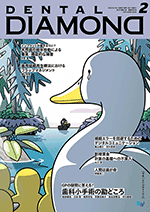
著者、共著者 :富永敏彦、高比良一輝、木村祐介、東條愛、多田瑛一朗、菅谷勉
現代の歯内療法:近年の歯内療法は、各種NiTiファイルの開発や歯科用マイクロスコープ、CBCTなどの導入により、飛躍的に進歩したといわれている。しかし、その成功率には大きな改善が認められず、根尖部に感染が進行していない症例(抜髄根管)では約90%、根尖部が感染して根尖病変を有する症例(感染根管)では80~90%、再治療症例では60~70%に激減すると報告されている。さらに、抜髄根管の予後を評価した研究では、成功率が各X線撮影方法によって異なり、デンタルX線写真(アナログ)では94.3%、デンタルX線写真(デジタル)では92.3%、CT画像では81.3%であったと報告されており、われわれ歯科医師が臨床症状からとらえているものとは乖離している。本来、根尖部に感染がないか、感染がわずかな抜髄根管の失敗原因は、不注意な器具操作やコロナルリーケージなどによる根尖部への感染の波及、科学的・機械的根管清掃後の感染歯髄、汚染物質の残留である。
とくに、Transportaion(レッジ、ジップ、穿孔:図1)が見られる根管においては、従来の清掃方法で感染源を除去することは非常に困難である。さらに、側枝や分岐などの副根管や根尖孔外にまで感染が及ぶと、難治性化してしまい、非外科的対処が不可能になる場合が多い。
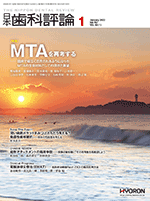
著者、共著者 :富永敏彦、高比良一輝、多田瑛一朗、菅谷勉
Ⅰ.従来の歯内療法:歯内療法を成功させるための重要な前提条件は、根管内の感染組織や汚染物質の除去である。しかし、根管形態は複雑なバリエーションを有しており、従来の化学的機械的根管清掃によって、全ての病原因子を除去することは事実上不可能である。 Toronto study1)において、initial treatmentの成功率は、術前に根尖病変が認められた症例では82%であり、認められなかった症例における93%より低く、さらにトランスポーテーションが認められた症例では69%まで低下したと報告されている。根管形態の変化が多様な根尖部に感染が波及した場合、従来の清掃方法では治癒に導けない症例も少なくなく、トランスポーテーションによって惹起されたジップ、レッジ、穿孔などの対処に苦慮することが多い(図1)。また、根尖外に感染が進行した症例において、歯根外表面、根尖病変内、根尖外異物内における感染源を除去することは不可能であり、外科処置が第一選択とされている(図2)。
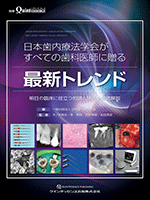
2021年9月10日発刊(クインテッセンス出版)
著者、共著者 :富永敏彦、多田瑛一朗、高比良一輝、菅谷勉
機械的科学的根管清掃は 、根管治療においてもっとも重要なステップである。しかし 、根管の湾曲・狭窄・分岐などの複雑な解剖学的形態や修復象牙質 、レッジ形成 、デブリにより根尖に穿通できない根管も存在する(図1)。根尖病変を有する穿通不可根管における歯内療法の成功率は 、穿通根管90%に対して 、わずか69%であり 、さらにRetreatmentでは31%まで激減すると報告がある。高周波電流は 、その特性より 、根管携帯に関係なく根管内を通電し 、電気抵抗値が高い狭窄部を通過する際 、電流密度が上昇し 、ジュール熱を発生させる。さらに熱により発生した気泡内の放電により 、根管壁のコラーゲンの焼灼や象牙質の溶融が可能であることが明らかにされている。またPanarielloらは 、高周波通電によるEnterococcus feacalisに対する抗バイオフィルム効果を発表しており 、われわれの研究においても 、Actionmyces naeslundiiのバイオフィルムを定着させた模擬根管に高周波通電を行ったところ 、バイオフィルムの消失が認められた。本稿においては 、Root ZX3を使用し 、根尖病変を有する穿通不可能な根尖性歯周炎症例に対する高周波通電の応用例について紹介する。

著者、共著者 :Toshihiko Tominaga, Eiichiro Tada, Kazuki Takahira and Tsutomu Sugaya
We report the case of a 39-year-old male with Persistent Apical Periodontitis (PAP) caused by infection in an uninstrumented area, wherein conventional chemical root canal treatment is not possible, which was sterilized via high-frequency conduction. He underwent root canal filling after multiple endodontic treatments for tooth #4. As symptoms recurred, he was referred to our department with the chief complaint of dull pain during mastication. Present symptoms were percussion pain of the tooth, buccal mucosa swelling at the apical portion, and grade 1 mobility. Radiography revealed inadequate root canal filling. A radiolucent image 5×6 mm in diameter and with an unclear boundary was observed around the apex. External root resorption was mainly observed in the apical foramen, with a crown root ratio of approximately 1:1. Using 6% sodium hypochlorite under dental microscopy, chemomechanical root canal preparation was performed. Passive ultrasonic irrigation and calcium hydroxide application were conducted three times; however, periapical tissue inflammation did not subside. Therefore, the patient was diagnosed with PAP, and the uninstrumented area was sterilized via high-frequency conduction. High-frequency currents were applied to the apex, root surface, and periapical lesion at 500 kHz and 90 V; periapical tissue inflammation resolved after 2 weeks. Subsequently, the root canal was filled. Follow-up radiography revealed a bone regeneration-like image at 2 months. Bone defects healed at 11 months. Although surgical endodontic therapy is conventionally performed in PAP patients, high-frequency conduction could be a minimally invasive nonsurgical endodontic treatment option for uninstrumented areas in PAP patients.
Part2:ファイル未到達根管での発熱と放電を応用した根管治
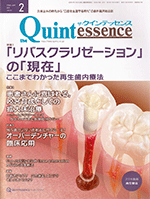
著者、共著者 :菅谷勉、富永敏彦、鷲巣太郎、西田絵利香、熊谷広道
冒頭部分一部抜粋:
前号で紹介したように、根管に高周波電流を通電すると、根尖狭窄部では電流密度が高くなって発熱するが(図2a)、根管内容液の沸点を超えると気泡が発生し、気泡内に放電が起こる(図2b)と考えられる。しかし、 側枝や副根管など、主根管に比べて細い根管では電流が流れにくいため、温度上昇が起こりにくく、通電による温度上昇は主根管のみで、側枝や副根管では効果が不十分になる可能性がある。一方、主根管の根尖狭窄部で内容液が沸騰して気泡が発生すると、気泡内は電流が流れにくいので、気泡が主根管を封鎖することになって側枝や副根管に電流が流れ始める可能性も考えられる。
Part1:高周波電流の発熱部位と抜髄, 難治性根尖性歯周炎への応用
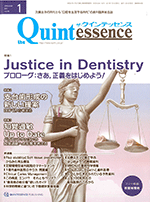
著者、共著者 :菅谷勉、富永敏彦、太良尾浩生、熊谷広道、森厚志、多田瑛一朗
高周波治療器「Root ZX 3 高周波モジュール(モリタ製作所:図1)で高周波電流をファイルに通電すると、ファイルと組織の接触部で発熱し、接触部位の軟組織は焼灼蒸散、その周囲0.5mmは熱変性を生じる。象牙質にファイルが接している部位では、1秒の通電で象牙質も焼灼蒸散し、0.1mm程度の陥凹が生じ、その周囲0.1mmの範囲は象牙質が溶融する。通法では炎症が改善しなかった根尖性歯周炎の症例にこれらを応用し、根管内および骨欠損内の肉芽組織を焼灼して良好な治癒が得られた。さらに、根管にファイルを通して通電すると、ファイルが到達していない根尖狭窄部や側枝、副根管にも電流が流れ、そこで電流によるジュール熱が発生するため、抜髄では主根管だけでなく根尖狭窄部や側枝での歯髄の 蒸散や熱変性が可能であった。
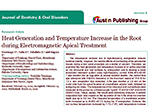
著者、共著者 :Toshihiko Tominaga, Eiichiro Tada, Kazuki Takahira and Tsutomu Sugaya
The temperature increase due to high-frequency energization reduces bacterial viability. However, the harmful effects of overheating of the periodontal tissues during a root canal procedure are a matter of concern. Therefore, we examined the heat generation and temperature increase in an active electrode on the intracanal and root surfaces by energization and to develop a novel endodontic treatment system using high-frequency current. K-file #10-40/.02 T was inserted into an egg white at several insertion depths. The current flow was energized with 510-kHz frequency at the maximum output of 15.5 W for 1.0s, and coagulation was evaluated. K-file was inserted at 2.0 mm on thecrown side from the apical foramen of a mandibular anterior tooth, followed byenergizing ten times. The temperatures of the intracanal and root surfaces weremeasured at the portion by a thermocouple Type-K TC-K-F-0.1-WP (HAYASHI DENKO Corp., Tokyo, Japan). The results were statistically analyzed. A uniform coagulated layer was created on the tip portion of the K-file when the insertion depth was up to 3.0 mm. The intracanal temperature of a mandibular anterior tooth increased up to 40.8℃-45.1℃ during the 1st energization. However, the root surface temperature increased by 7.1℃-7.8℃, with temperature increase per one energization being <0.5℃ if the time interval was >3.0 s during the subsequent energization. In the electromagnetic apical treatment system developed based on these results, the efficient generation of Joule heat and energization were possible without harmful effects on the periodontal tissue.
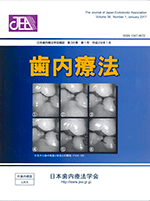
著者、共著者 :富永 敏彦, 北池 光希, 多田 瑛一朗, 高比良 一輝, 坂東 直樹, 平尾 早希, 林 邦彦, 横山 昌憲, 吉永 仁
Disinfection of the root canal system is essential in endodontic therapy. However, due to the complex anatomical morphology, it is impossible to completely eliminate infecting microorganisms. We have reported that electromagnetic stimulation has an activating effect on osteoblastic cells as well as a bactericidal effect and suggested that direct electromagnetic stimulation may be applicable for refractory apical periodontitis. Consequently, we developed Electro-Magnetic Apical Treatment (EMAT), with the aim of promoting rapid healing of periodontal tissue. The purpose of this study was to assess the efficacy of EMAT for apical periodontitis.
Methods:74 maxillary anterior teeth with periapical lesions (>5.0 mm in diameter) were treated. 37 teeth were stimulated by the EMAT device, and 37 teeth were not stimulated. Radiographic follow-up was performed to evaluate the healing effect at 12 months postoperatively.
Results : The success rate (97.3%) in the EMAT group was statistically higher (p<0.01) than that in the non-stimulated group (73.0%). In the successful cases, the average reduction rate of periapical lesions was 9.7±5.2%/month in the EMAT group, which was significantly higher (p<0.01) compared with the non-stimulated group (4.9±1.7%/month).
Conclusions : These results suggest that EMAT accelerates the healing process of periodontal tissue.

著者、共著者 :Hiromichi Yumoto, Kouji Hirao, Toshihiko Tominaga, Naoki Bando, Kanako Takahashi, Takashi Matsuo
Periodontitis with bone resorption is caused by inflammatory reactions to bacterial infection. We recently reported that electromagnetic wave irradiation (EMWI) has bactericidal effects. However, the effects of EMWI on periodontal tissues remain unclear. This study was aimed to investigate the effects of EMWI on osteoblasts. Methods: Osteoblastic cells MC3T3-E1 were treated with EMWI (500-1,000 kHz, 5 times, 1 sec/time). Cell growth and cytotoxicity were determined by cell proliferation assays and measurement of lactate dehydrogenase release, respectively. Gene expression and protein production of growth factors were analyzed using real-time PCR and ELISA, respectively. EMWI-activated cellular signal transduction pathways were investigated by immunoblotting and blocking assay with specific inhibitors. Results: Osteoblasts proliferation was significantly enhanced 3 days after EMWI and no cytotoxicity was observed. EMWI up-regulated various growth factors, such as vascular endothelial growth factor (VEGF) and platelet-derived growth factor (PDGF). EMWI induced ERK1/2, p38 MAPK and SAPK/JNK phosphorylation within 5 min, and the production of PDGF-ΑΑ and VEGF was partially reduced by MAPK-specific inhibitor. Conclusion: These findings demonstrated that EMWI increases osteoblastic cell activity and the expression of growth factors via ERK1/2 and p38 MAPK pathways and suggested that EMWI may be beneficial to bone tissue repair such as periodontitis.

著者、共著者 :H. Yumoto, T. Tominaga, K. Hirao, T. Kimura, K. Takahashi, T. Sumitomo, N. Bando and T. Matsuo
Aims: The aim of this work was to clarify the effects of electromagnetic waveirradiation (EMWI) on oral bacterial pathogens.
Methods and Results: A Gram-negative (Porphyromonas gingivalis) or Grampositive(Streptococcus mutans, S. intermedius,Enterococcus faecalis) bacterial suspension was irradiated by EMW apparatus (500?1000 kHz, 5?15 times, 1s time)1). Quantification of survival bacteria by CFU counting revealed that EMWI exhibited marked bactericidal activity against all tested bacteria and bactericidal activity at 500 kHz increased in an irradiation number-dependent manner. After EMWI at 500 kHz, scanning electron microscopic observations showed that the chain of S. mutans cells was shortened after 5 irradiations and the outlines of bacterial cells (S. mutans and P. gingivalis) were unclear after 5? 10 irradiations. EMWI inhibited the inductive effect of S. mutans on proinflammatory cytokine production in human monocytes and this inhibitory effect was comparable with that of heat-killed bacteria. Furthermore, using an
enzyme activity assay, EMWI partially inactivated the activities of gingipains from P. gingivalis.
Conclusions: These findings demonstrated that EMWI has inactivation and
bactericidal activities against single microbial species among four kinds of oral pathogens.
Significance and Impact of the Study: Electromagnetic wave irradiation may be applicable for medical disinfection and sterilization, such as refractory periapical periodontitis.

著者、共著者 :坂東 直樹, 富永 敏彦, 湯本 浩通, 住友 孝史, 平尾 早希, 平尾 功治, 松尾 敬志
Periapical periodontitis is considered to be caused by infectious agents persisting in the root canal system triggering the host immune reaction. Disinfection is the key point for endodontic treatment, but it is difficult to completely remove all causal agents from the root canal system because of the morphological complexities. In this study, we focused on the potential usefulness of electro-magnetic wave irradiation (EMWI) for clinical application to promote healing. The aims of this study were : 1) to determine the characteristics of EMW and 2) to evaluate the clinical application of EMWI to endodontic treatment. The analysis of EMW characteristics demonstrated that it is important to make the diameter of the active electrode tip smaller and to keep the insertion depth within 5 mm for effective generation of Joule heat, and revealed that Joule heat conduction spreads 1.0-1.5 mm wide in the horizontal direction. The success rate of clinical application of EMWI was 99.1%, which is higher than that of the EMWI-untreated group (95.1%). Moreover, the reduction rate of the diameter of periapical lesion in the EMWI-treated group (75.62%) was significantly increased. These findings demonstrate that EMWI accelerates healing of periapical lesions and suggest that it may be useful for clinical application to refractory periapical periodontitis as non-surgical treatment.

著者、共著者 :富永 敏彦
Periapical periodontitis has been considered to be a host immune reaction triggered by infectious agents persisting in root canal system. Disinfection within the root canal system is the most important procedure in endodontic treatment; however, it is quite difficult to completely remove bacteria and all causal agents from the root canal system because of its anatomical and morphological complexities. Therefore, it is necessary to develop new control techniques against infected root canal-associated bacteria. Here, we focused on the potent of electro-magnetic wave irradiation (EMWI) as a disinfection apparatus against pathogens localized in the root canal as well as clinical application to promote the healing of bony defects around dental roots. The aims of this work were 1) to determine the characteristics of EMW, 2) to clarify the effects of EMWI on oral bacterial pathogens and 3) to evaluate the clinical application of EMWI to endodontic treatment.
The analysis of EMW demonstrated that it is important to make the diameter of active electrode tip smaller and keep the insertion depth within 5 mm for effective generation of Joule heat, and revealed that Joule heat conduction spreads 1.0-1.5 mm wide in a horizontal direction, not vertical direction.
Bacterial suspension was irradiated by the EMW apparatus (500-1,000 kHz, 5-15 times, 1 sec/time). The enumeration of survival bacteria revealed that the EMWI exhibited great bactericidal activity to kill all tested bacteria and this bactericidal activity at 500 kHz increased in an irradiation times-dependent manner. After 5-10 times EMWI at 500 kHz, scanning electron microscopic observations showed that a chain of Streptococcus mutans cells was shortened and the outer layer or shape of S. mutans and Porphyromonas gingivalis cells were unclear. EMWI inhibited the induction of pro-inflammatory cytokine production in human monocytes by S. mutans. Furthermore, EMWI partially inactivated the activity of gingipains from P. gingivalis.
The success rate of EMAT clinical application was 99.0%, which is significantly higher than that of EMAT-untreated the control group (94.9%). Both the diameter and area of periapical lesion in EMAT group had markedly reduced throughout the entire follow-up period of 6 month. The changes per month in diameter and area of periapical lesion in EMAT group were much bigger than those in the control group.
These findings demonstrated that EMWI has inactivative and bactericidal activities against oral bacteria and accelerates healing of periapical lesion, and suggest that it is useful for the clinical application to refractory periapical periodontitis as a non-surgical treatment.
書籍等

著者、共著者:富永 敏彦、多田 瑛一朗、高比良 一輝、菅谷 勉
書籍タイトル:感染根管治療 Retreatment :木ノ本 喜史先生編著(ヒョーロン・パブリッシャーズ)内
冒頭部分一部抜粋
電磁波や超音波などの物理的刺激は治癒を促進することが報告されており、高周波電流も根尖病変の治癒を促進できる可能性がある。
そこで、高周波電流を根管と根尖部歯周組織に直接作用させ、治癒を活性化する「電磁波根尖療法(electromagnetic apical treatment:EMAT)(2~4) を考案した。本稿では、EMATの術式ならびに臨床応用例について解説する。
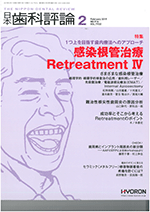
著者、共著者:富永 敏彦、多田 瑛一朗、高比良 一輝、菅谷 勉
書籍タイトル:日本歯科評論No.916(日本歯科評論)
冒頭部分一部抜粋
電磁波や超音波などの物理的刺激は治癒を促進することが報告されており、高周波電流も根尖病変の治癒を促進できる可能性がある。
そこで、高周波電流を根管と根尖部歯周組織に直接作用させ、治癒を活性化する「電磁波根尖療法(electromagnetic apical treatment:EMAT)(2~4) を考案した。本稿では、EMATの術式ならびに臨床応用例について解説する。
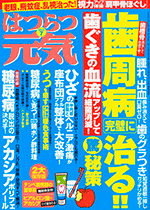
著者、共著者:富永 敏彦
書籍タイトル:はつらつ元気7月号(芸文社)
冒頭部分一部抜粋
歯槽骨が溶けた場合、一般的にその再生は不可能とされ、外科手術による治療ないしは抜歯という方法が採られています。ところが2006年、そのどちらの方法にも依らない画期的な治療法が誕生し、注目を集めています。
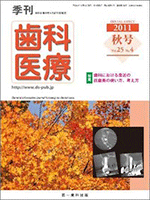
著者、共著者:富永 敏彦
書籍タイトル 季刊・歯科医療秋号(第一歯科出版)
冒頭部分一部抜粋
電磁波を直接応用する「電磁波骨再生療法Electro-Magnetic Apical Treatment(EMAT)」は、in vitro.in vivoでの研究結果より最近の増殖を抑制し、さらに炎症性サイトカインの産生誘導も減少させることが認められている。
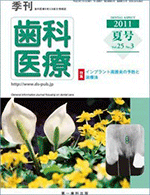
著者、共著者:富永 敏彦
書籍タイトル:季刊・歯科医療夏号(第一歯科出版)
冒頭部分一部抜粋
2005年に考案した「電磁波骨再生療法Electro-Magnetic Apical Treatment(EMAT)」は難治性根尖病変に対して、電磁波(500~1000kHz)を直接応用することにより、根管内および根尖周囲における病原体の殺菌や骨芽細胞の活性化を惹起し、歯周組織の治癒を加速化させることを目的としている。
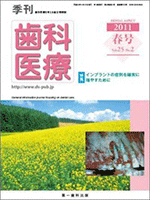
著者、共著者:富永 敏彦
書籍タイトル:季刊・歯科医療春号(第一歯科出版)天然歯を残す新しい治療法-
冒頭部分一部抜粋
本連載では、「電磁波骨再生療法、Electro-Magnetic Apical Treatment(EMAT)における細菌および骨芽細胞様細胞に対する影響ならびに臨床結果からみられた有用性、将来的な応用方法について解説する。
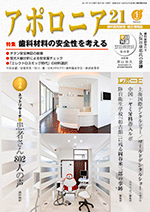
著者、共著者:富永 敏彦
書籍タイトル:アポロニア21:205号
冒頭部分一部抜粋
2005年に考案され、外科処置でしか対応困難であった難治性根尖病変に対して良好な成果を上げている「EMAT(電磁波骨再生療法)」について解説する本連載。最終回となる第3回目は、EMAT開発経緯を振り返り、今後の発展性について展望したい。
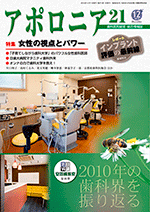
著者、共著者:富永 敏彦
書籍タイトル:アポロニア21:204号
冒頭部分一部抜粋
2005年に考案され、外科的処置でしか対応困難であった難治性根尖病変に対して良好な成果を上げている「EMAT(電磁波骨再生療法)」について解説する本連載。
第2回目は、日常臨床にて、疼痛・腫脹・排膿が持続する「難治性根尖性歯周炎」に対してEMATを行った2症例をご紹介します。
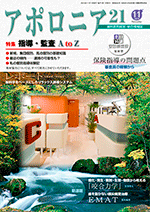
著者、共著者:富永 敏彦
書籍タイトル:アポロニア21:203号
冒頭部分一部抜粋
近年の歯内療法は、マイクロスコープや歯科用CTの登場により、盲目的に行われてきた手技からより計画的に行える治療方法に変化しつつあります。しかし、根管系の複雑な解剖学的形態により、起炎因子を機械的清掃や化学的清掃で完全に取り除くことは不可能であり、日常臨床において、長期間治療しない症例に遭遇することがあります。
本連載では、外科的処置でしか対応困難であった難治性根尖病変に対して良好な成果を上げている、2005年に考案された「EMAT(電磁波骨再生療法)」についてご紹介します。

著者、共著者:富永 敏彦
書籍タイトル:とみなが歯科小冊子
冒頭部分一部抜粋
「美味しく食事ができる」我々にとって非常に大切なことです。歯科医師になって20年…。いつもポリシーとして、思い続けてきたことは…。
「自分がして欲しい医療を患者さんにする!」誰でも「歯を削る」のはイヤですよね。
まして、「歯を抜く」はもっとイヤだと思います。
私も全く同感です。もう二度と生えてこないのだから、歯を減らしたくありません。「天然の歯に勝るものはない。どうにかこの揺れている歯を残すことはできないか?」
そればかり考えてきました。
